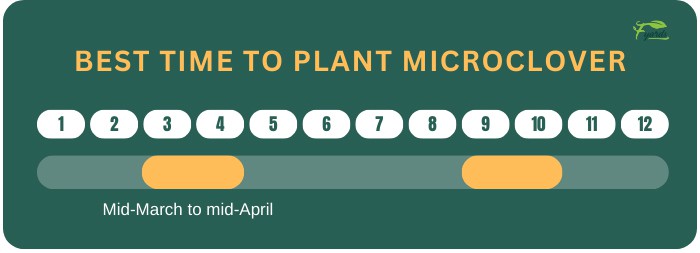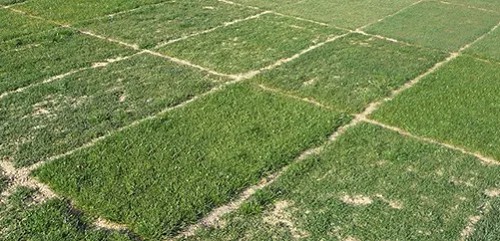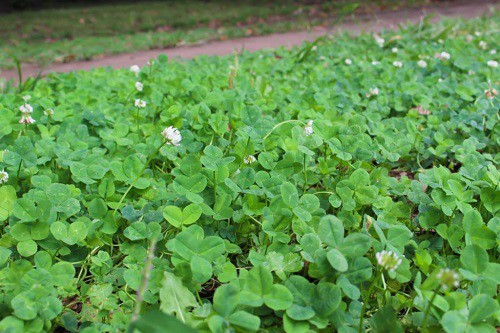Microclover is a great plant to have at home, whether you’re growing it by itself or with grass seeds.
This clover will stay green from spring through fall to form a lush lawn with beautiful white flowers, all while snuffing out weeds and fixing nitrogen in the soil to create a natural fertilizer.
If you’re wondering when to plant microclover, mid-March to mid-April and September to October are the ideal planting season.
Table of Contents
The Best Time to Plant Microclover
It’s technically okay to start a micro clover lawn anytime the ground isn’t frozen. But for optimal growth, timing should still be considered, as late seeding can delay germination and expose microclover to hot temperatures before it’s ready.
- If you’re sowing clover seed, get them in the ground four weeks after the last frost or two weeks before the end of winter freeze.
- As for starting a micro clover yard in the fall, eight weeks prior to the first frost is the optimal time frame, though gardeners can sow seeds as late as four weeks before winter chills set in.
Note that it’s best to wait until the tail end of the summer when planting later in the year, since microclover doesn’t sprout well under excess heat.
- Ensure night temperatures average at least 40℉ before planting as well. If all goes smoothly, germination time should happen within one or two weeks.
You can refer to the average frost dates of your locality to determine when to start a clover lawn. With regards to hardiness zones, microclover grows best in zones 3 to 10, though it may be hardy down to zone 2 with proper care.
It’s also advisable to plant in spring and not fall if you live in northern or colder zones, since winter comes relatively early in these areas.
| Hardiness region | Average final frost | Average first frost |
| 2 | May 15 | September 1 |
| 3 | May 1 | September 8 |
| 4 | April 24 | September 21 |
| 5 | April 7 | October 13 |
| 6 | April 1 | October 17 |
| 7 | March 22 | October 29 |
| 8 | March 13 | November 7 |
| 9 | February 6 | November 25 |
| 10 | This region rarely experiences frost. | |
Tips for Successful Microclover Planting
To grow a clover lawn successfully, consider the following factors.
1. Seeding rates
The seeding rate will change depending on whether you’re planting microclover in an existing lawn, by itself, or in a micro clover grass seed mix.
So, the first thing to consider is: Must you plant clover with turfgrass? The answer ultimately depends on your preference, though there are several things to keep in mind.
Southern gardeners will be able to plant microclover on its own and enjoy a lush field all year. In contrast, northerners are better off pairing clover with a turf like tall fescue and Kentucky bluegrass to produce a less patchy yard in winter (when clover dies back).
Regional recommendations aside, here are the planting rates for microclover seed:
- 1 pound every 1,000 square feet if planted alone
- 5 pound of clover seeds and 10 pounds of grass seeds for brand-new yards
- And5 pounds of clover every 10,000 square feet for overseeding an existing lawn. The grass blades should be cut down to two or three inches tall before planting.
2. Planting location
Microclover prefers a soil pH of 6 to 7, four to six hours of direct sun per day, and lightly raked, composted ground. That said, it also does well in compacted or rocky soils.
You should sow microclover at a depth of ¼ inch, then wait a week before feeding the spread clover seed with chicken manure.
Last but not least, water the soil whenever it’s dry to keep the lawn from turning brown and facilitate root establishment.
Conclusion
Understanding when to plant microclover will help you establish a vibrant lawn that’s ideal for outdoor activities and high-traffic areas.
Not only is microclover soft and durable, but it also requires little maintenance in terms of fertilizing and pest control, making it an excellent choice for busy homeowners.
Read next:

Hi, I am William – Floridayards’ digital content creator. My job is to find answers to all your concerns with thorough research and our team’s expert advice. I will also bring you honest reviews on the best products and equipment for raising your beautiful garden. Please look forward to our work!














